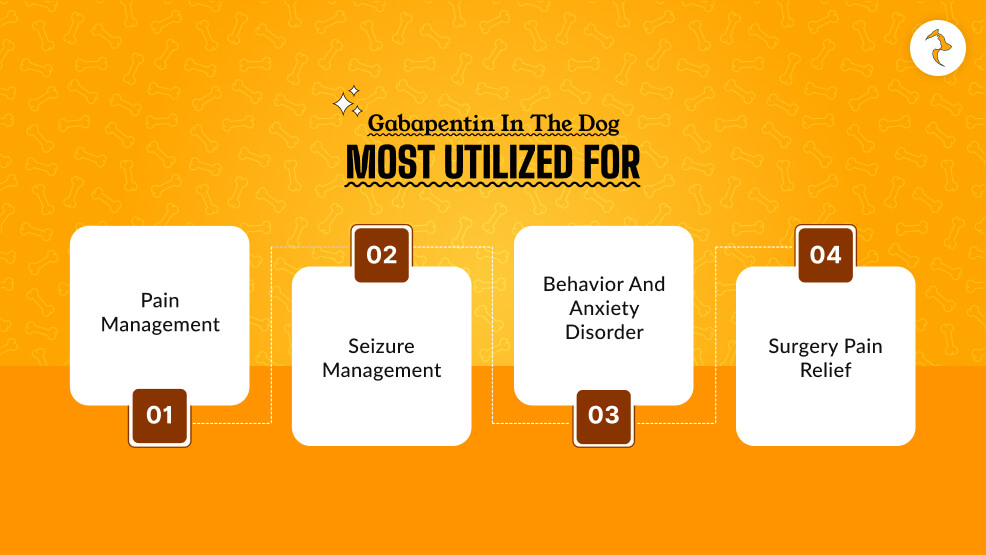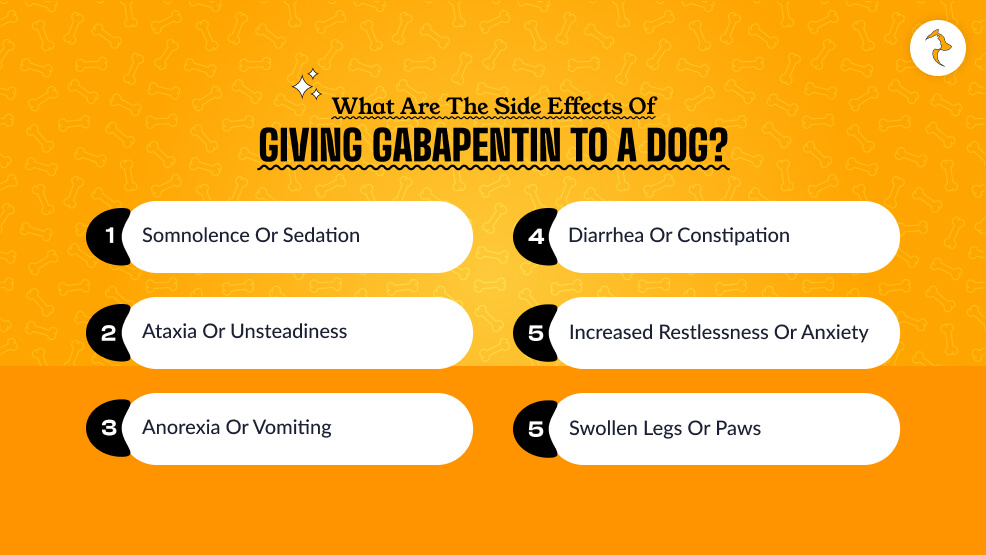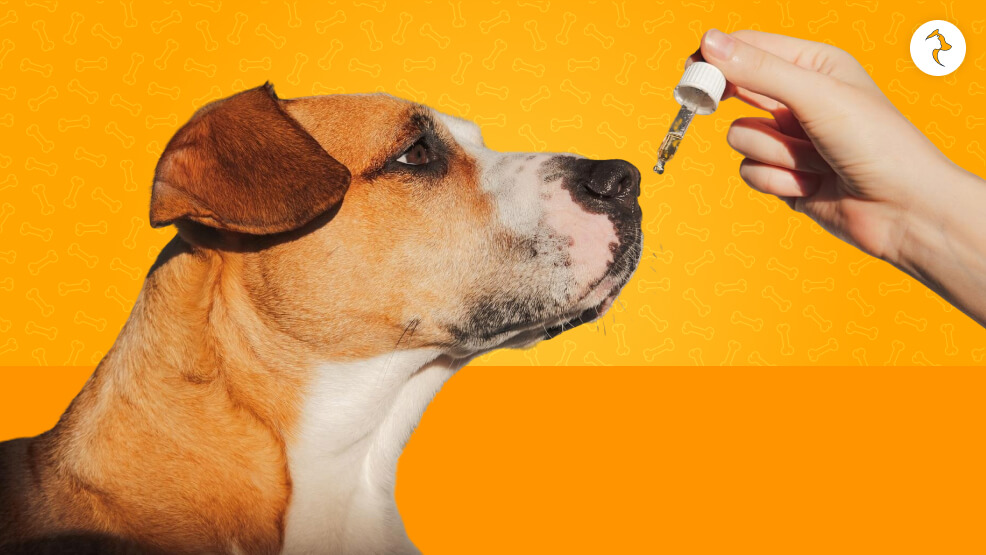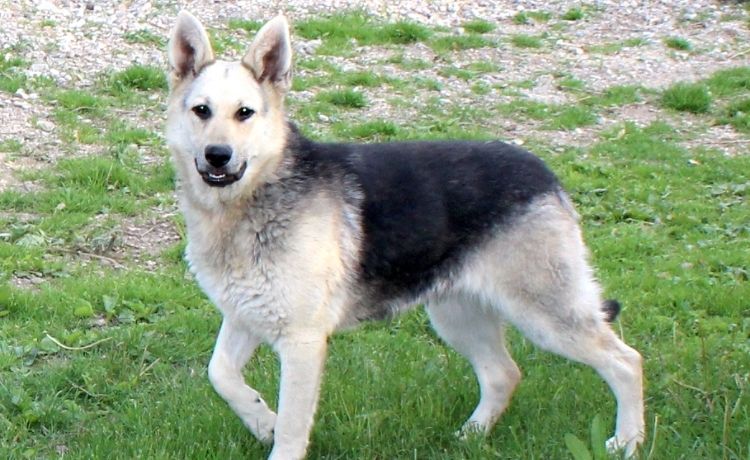Gabapentin for Dogs: A Pet Parent’s Personal Experience


Gabapentin is an animal medication administered to the pain, stress, or seizure of the dog. Gabapentin was originally designed as a medication that is for human consumption.
But is now included in regular intake as a pet medicine because gabapentin is beneficial for various functions and will not have any harmful effects if taken in the right way.
The above talks about everything else concerning gabapentin for dogs, such as dosage, type of dose, side effects, and drug interaction.
Why is Gabapentin for Dogs Needed?

Gabapentin is utilized by veterinarians to manage all types of conditions in the dog. Most utilized for:
- Pain management: Neuropathic pain or secondary pain due to arthritis, disc disease, or neoplasia.
- Seizure management: Add-on therapy in canine epilepsy or another seizure condition.
- Behavior and anxiety disorder: Utilized with care to settle dogs in situational anxiety, i.e., car ride, vet, thunderstorms.
- Surgery Pain Relief: Administered once daily in combination with other surgery pain relief medication.
How Is Gabapentin Action in Dogs?

Gabapentin is effective in action with its activity on nervous system calcium channels. It regulates the excitatory neurotransmitter release and therefore avoids repeated nerve impulses.
Therefore, it has been found to be highly effective in the regulation of neuropathic pain and seizure as well.
Whereas gabapentin is hardly as old an analgesic as are NSAIDs or opioids, it may be used very successfully in conjunction with them as a trial to provide maximum relief to a dog.
With anxiety, it functions in somewhat similar way manner to a calming effect when it’s feeling the calming effect but won’t sedate the dog.
Proper gabapentin for dogs dosage by weight is based on your dog’s disease, and condition. Usual dose is 5 to 10 mg/lb body weight every 8 to 12 hours.
General Guidelines:
- Pain: 5 to 10 mg/lb every 8 to 12 hours
- Seizures: Doses raised, usually under close veterinary guidance
- For Anxiety: Low to moderate doses, usually one hour prior to an anxiety-evoking situation
Note: Always best to use the exact dosing that your veterinarian prescribes. Never change a dose without first calling them.
How Long Does Gabapentin Take to Work?
Gabapentin typically takes 1 to 2 hours to become effective. Used for pain or anxiety, owners typically observe their dog relaxed or calm about an hour after dosing.
For pain or seizure management, gabapentin may take a few days of uninterrupted administration to be of most use. It can be tapered in a few instances over weeks to be of most use.
How Long to Maintain Your Dog on Gabapentin?
Gabapentin is highly well-tolerated with short- and long-term administration in veterinary medicine. Chronic issues like arthritis or epilepsy can keep some dogs on gabapentin years or months.
Long-term care will be checking in with your vet from time to time to check on kidney function and general health status of the animal.
If gabapentin is no longer working or side effects arise, your vet can switch to a different medication.
What Are the Side Effects of Giving Gabapentin to a Dog?

Gabapentin is generally well tolerated in the majority of dogs, yet like all medicines, there are side effects.
Common Side Effects:
- Somnolence or Sedation
- Ataxia or Unsteadiness (gait unsteadiness)
- Anorexia or Vomiting (mild gastrointestinal disturbance)
Less Common Side Effects:
- Diarrhea or Constipation
- Increased Restlessness or Anxiety (paradoxical effect)
- Swollen legs or paws (rare)
Side effects in such a situation are minimal and will be nonexistent the moment that the dog adjusts to the medicine or the dose is lowered. Any case of adverse side effects must be presented to your veterinarian immediately.
Gabapentin for Dogs: What Does Gabapentin do for Dogs
Gabapentin will numb a dog’s sensitivity to tension and pain. Painful chronic pain dogs will be more lively, friendly, and relaxed after the drug has kicked in.
Gabapentin is a sedative in nervous dogs, but one never knows how the dog will be. Some sleep or have sleepy eyes, but some will just tolerate stressful stimuli.
Yes, sopor or sedation are general side effects of gabapentin, particularly at the beginning of treatment or on taking very high doses. It’s not a bad side effect and is indeed an effect that is beneficial to nervous dogs.
The sedation will eventually wear off once the animal becomes accustomed to taking the drug. If your dog is becoming too sedate, talk to your vet about lowering the dose.
Can Gabapentin Cause Constipation or Diarrhea in Dogs?

Yes, but amazingly, extremely unlikely. Constipation or diarrhea is a side effect of gabapentin on the GI tract at drug administration or drug dose change.
What to Watch Out For:
- Observe the frequency or consistency of your dog’s stool.
- Keep your dog well hydrated because dehydration will always aggravate the GI upset.
Mild stomach upset will probably sort itself out without you having to take vet advice, but persistent diarrhea and vomiting need to be reported to your vet.
How much Gabapentin should I give my Dog?
The dose of Gabapentin for dogs varies from one dog to another, here is a chart that showcases the weight of your dog and the Gabapentin dosage.
Dosage Chart of Gabapentin for Dogs (Low-Dose)
| Dog’s Weight | Low Dose (5mg/kg) |
|---|---|
| 5kg | 25mg |
| 7.5kg | 37.5mg |
| 10kg | 50mg |
| 12.5kg | 62.5mg |
| 15kg | 75mg |
| 17.5kg | 87.5mg |
| 20kg | 100mg |
| 25kg | 125mg |
| 30kg | 150mg |
| 40kg | 200mg |
| 50kg | 250mg |
| 60kg | 300mg |
Dosage Chart of Gabapentin for Dogs (High-Dose)
| Dog’s Weight | High Dose (30mg/kg) |
|---|---|
| 5kg | 150mg |
| 7.5kg | 225mg |
| 10kg | 300mg |
| 12.5kg | 375mg |
| 15kg | 400mg |
| 17.5kg | 525mg |
| 20kg | 600mg |
| 25kg | 750mg |
| 30kg | 900mg |
| 40kg | 1200mg |
| 50kg | 1500mg |
| 60kg | 1800mg |
Can Gabapentin Kill My Dog?
You may overdose gabapentin dog if you’ve given them a massive dose or they’ve swallowed some extra tablets by mistake. Some of the gabapentin overdose symptoms and signs include:
- Too much sleeping or somnolence
- Spontaneous loss of balance
- Vomiting
- Seizure or tremor (rare but possible)
- Coma (most severe)
If you think overdose is occurring, call your vet or a pet emergency animal hospital. Activated charcoal or supportive care may be given to prevent bad effects.
Do Dogs Need to Be Withdrawn from Gabapentin?
Yes. If your pet has been on gabapentin for weeks or longer, you must taper more slowly and not cold turkey. Cold turkey withdrawal will produce withdrawal side effects or rebound pain/seizures.
Your veterinarian will arrange a taper schedule in a safe fashion, usually decreasing the dose stepwise over days to weeks.
What Else Can I Give to My Dog Instead of Gabapentin

If gabapentin is unsuccessful or intolerated because of side effects, then the following therapies of first choice are in your control for your dog dependent upon his or her diagnosis.
Alternatives for Pain:
- NSAIDs: Carprofen, meloxicam, or deracoxib
- Tramadol: Weak opioid with mild to moderate pain relief
- CBD Oil (use only veterinary-formulated CBD only)
- Physical Therapy or Acupuncture
Alternative Alternatives to Seizure:
- Phenobarbital
- Levetiracetam (Keppra)
- Zonisamide
Alternative Alternatives for Anxiolysis:
- Trazodone
- Fluoxetine (Prozac)
- Behavioral Therapy
- Natural Supplements: L-theanine, melatonin, valerian root
Always check with your vet before adding on any addition to medication. There are a few of these which will require blood to be done first before adding on and do have some contraindications.
FAQs
Here are a few questions and queries that others have asked on the topic of gabapentin for dogs that you might find helpful and informative.
The effects of Gabapentin in your dog will make them feel sleepy and drowsy, making them calm and mellow. They might feel too sleepy to move around and might lose coordination at times.
A medicine that works great as an alternative to gabapentin is that of tramadol for dogs. It is an oral based opioid medication, that reliefs pain just like gabapentin, but doesn’t have anti-inflammatory properties.
For certain cases, vets sometimes use both these medications together, or combine an NSAID with either one of them for better pain relief.
Gabapentin for Dogs: Is it Best for Your Dog?
Gabapentin for dogs has proven to be an excellent drug in veterinary medicine in the management of seizures, pain, and anxiety disorders.
As safe and as useful as it is now, gabapentin is still in the realm of professional discretion of a veterinarian to prescribe, utilized, and side effects closely monitored.
If your dog is placed on gabapentin, keep them in your company for a few days and in constant contact with your veterinarian. Your veterinarian’s watchful eye and guidance can be life or death to your dog.
Remember this: Never administer human medication to your dog without consulting a veterinarian first. Human gabapentin has xylitol in it, which is poisonous to dogs.
If you understand how gabapentin functions and how to administer it to it appropriately, then you can be very proficient in decision-making in a way that your pet would be healthy, safe, and calm.









Leave A Comment